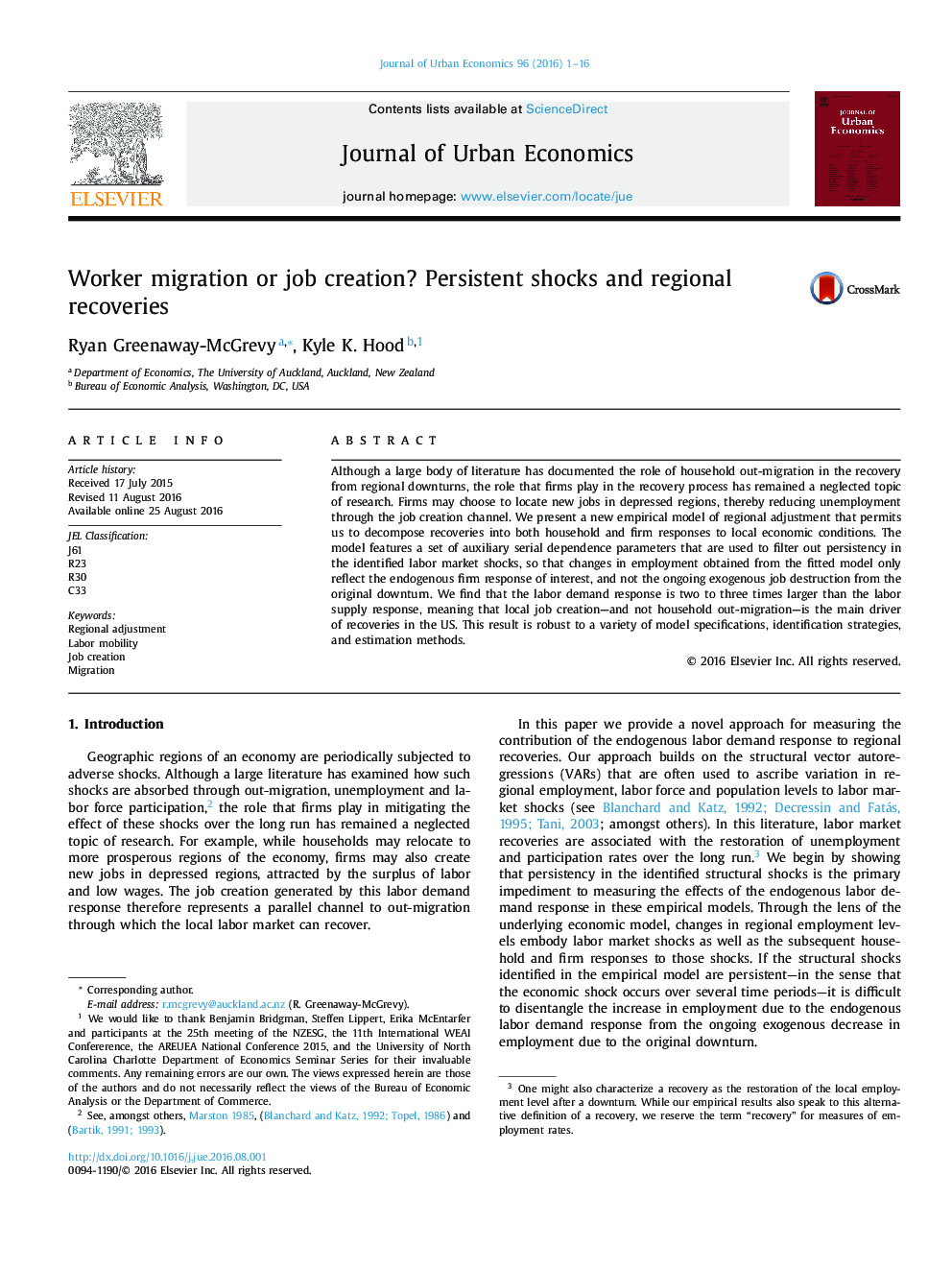| Article ID | Journal | Published Year | Pages | File Type |
|---|---|---|---|---|
| 5101980 | Journal of Urban Economics | 2016 | 16 Pages |
Abstract
Although a large body of literature has documented the role of household out-migration in the recovery from regional downturns, the role that firms play in the recovery process has remained a neglected topic of research. Firms may choose to locate new jobs in depressed regions, thereby reducing unemployment through the job creation channel. We present a new empirical model of regional adjustment that permits us to decompose recoveries into both household and firm responses to local economic conditions. The model features a set of auxiliary serial dependence parameters that are used to filter out persistency in the identified labor market shocks, so that changes in employment obtained from the fitted model only reflect the endogenous firm response of interest, and not the ongoing exogenous job destruction from the original downturn. We find that the labor demand response is two to three times larger than the labor supply response, meaning that local job creation-and not household out-migration-is the main driver of recoveries in the US. This result is robust to a variety of model specifications, identification strategies, and estimation methods.
Related Topics
Social Sciences and Humanities
Economics, Econometrics and Finance
Economics and Econometrics
Authors
Ryan Greenaway-McGrevy, Kyle K. Hood,
